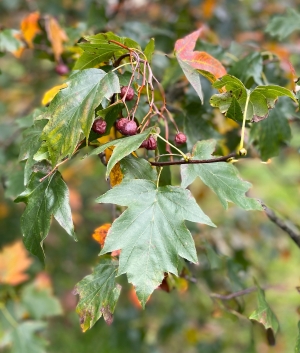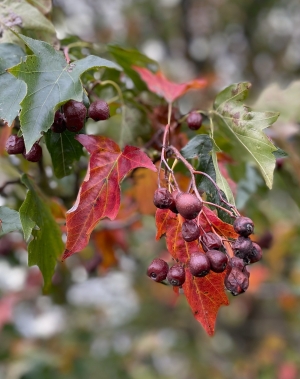Tree of the Month: Wild Service Tree


In spring, clusters of white flowers decorate the branches, but it’s in autumn that the tree truly stands out, with leaves turning a vivid crimson-bronze. This is also the time to collect its edible fruit, which taste like dried apricots when softened by frost - a process called bletting. Traditionally used as a remedy for colic (torminalis means “good for colic”), these fruits are becoming less palatable as frosts grow rarer with a warming climate.
Westonbirt Arboretum leads a consortium of institutions and experts working to prevent the extinction of Sorbus species - including the wild service tree. As part of this effort, many wild service saplings have been planted within the project, including one feature tree propagated from a self-seeded specimen in Silk Wood.